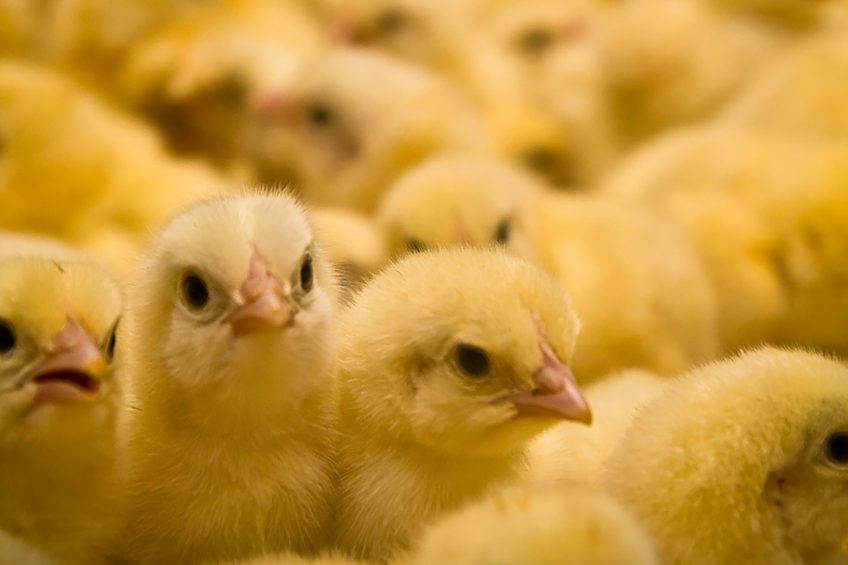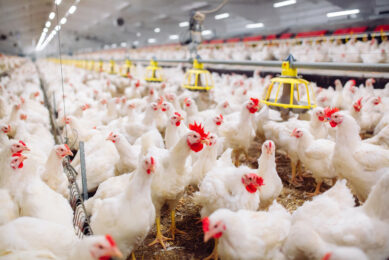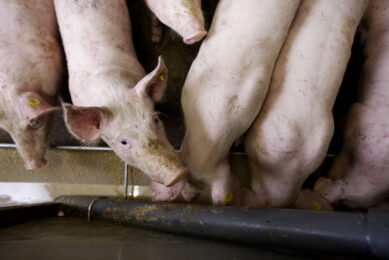Giving chicks the healthiest start

Removal of antibiotic growth promoters has revealed that it is crucial to manage the makeup of the birds’ intestinal microbiota to avoid, or at least limit, the risks of health problems inherent to intensive production.
The main strategies for promoting intestinal health and intestinal microbiota in birds can be outlined as follows: Selectively introduce favourable bacterial populations from a very young age; provide a regular supply of nutrients specific to the beneficial bacteria; and act directly on pathogenic bacteria.
Different methods are available, such as the dietary supplementation with probiotics, prebiotics, organic acids and
essential oils. These products act either avoiding bacterial adhesion to the intestinal cells or through bactericidal or bacteriostatic effects.
The goal is to achieve the most stable balance on the microbiota in order to avoid the trouble caused by bacteria like E. coli, Clostridium and Salmonella. The gastrointestinal microbiota profile depends on numerous factors such as the health of the breeding stock, production system, stressors (vaccination, viral episodes, etc.), nutrition and stocking densities.
Favourable bacterial populations
The first bacteria to colonise the animals’ digestive tract will shape the intestinal ecosystem for the introduction of global intestinal microbiota. Selectively colonising the gastrointestinal tract with beneficial bacteria can modulate the expression of certain genes in the tract’s epithelium, creating conditions for establishing beneficial microbiota.
Since the first micro-organisms that come into contact with a newly hatched chick’s gastrointestinal tract are from the breeding stock, controlling the microbiota in the parents would be ideal. Studies have demonstrated that the use of beneficial bacteria in low doses in the hatchery improves chicks’ resistance to pathogens. Other studies have validated that an in-ovo injection of FOS (fructooligosaccharide) helps maintaining higher levels of bifidobacters, with positive effects on zootechnical performance and mortality rate.
Most of the microbial strains in probiotics are of the genus Bifidobacterium or Lactobacillus. In certain conditions, lactobacilli can produce metabolites that limit the growth of Salmonella by modulating immunity and avoiding bacteria binding to the epithelial cells of the intestine. However, according to some publications, this type of effect is limited.
Regular supply of specific substrates
To reinforce the colonisation of beneficial bacteria, it is important to support their ability to flourish and compete with pathogens. Prebiotics are used in many cases as an additive to the feed. While the birds are unable to digest the prebiotics, they have a beneficial effect on the animals’ intestinal health by specifically stimulating the growth or activity of a limited number of favourable species of bacteria. Almost all prebiotics are oligosaccharides or polysaccharides, like FOS, several studies have shown their beneficial effect, as well as decreasing E. Coli and Clostridium populations in chicken caeca (Figure 1).
Figure 1 – Bacterial population in the caeca of 29-day-old chickens fed FOS or a protected blend of organic acids and essential oils compared to a negative control. (Fravalo et al., 2010).

Enzymes are important additives specifically for energy and protein optimisation. They are also cited for their indirect effect on the development of beneficial microbiota. Research demonstrated that supplementing xylanase of bacterial origin to chickens infected with Salmonella sp during 3 days reduced carcass contamination on slaughter (-2 log CFU/g). By acting on the arabinoxylan, the xylanase plays a prebiotic role on the beneficial microbiota in the lower intestine.
Figure 2 – Citric and sorbic acid concentrations in the chicken’s different digestive compartments upon use of a protected blend (Grilli et al., 2007).

Essential oils are extracts from plants that contain a large quantity of aromatic molecules in their fruits, seeds, bark or roots, which make up the plant’s active principles. Essential oils can have varied effects, such as antifungal, antiphrastic, antibacterial, anti-inflammatory. The review by Burt presents the antibacterial mechanism of action by targeting the pathogens’ membrane. Essential oils are mainly used to stabilise the animals’ digestive flora. The goal is to act on certain bacterial populations to obtain a more favourable profile for the animal.
It has also been demonstrated that coated products are far superior to non-coated products. This is because coated products are released much farther along the digestive tract, while non-coated products are absorbed or dissociated rapidly and will have diminished action in the intestine. Others demonstrated that associations between organic acids and essential oils can be effective against pathogens in the gastrointestinal tract. By using a combination of micro-encapsulated, essential oils and organic acids, or a blend of protected organic acid salts, Gauthier et al. obtained positive results on chickens exposed to a necrotic enteritis challenge (Table 1).
Viable alternative
The effect on zootechnical performance of the combination of protected, organic acids and essential oils can be explained not only by the control of Clostridium and E. coli populations, but also by the decrease in virulence expression of E. coli populations in the chickens’ gastrointestinal tract. This approach is important for the safety of the finished product.In poultry production, interactions between the birds’ feed and their intestinal health have been amply demonstrated. In the past, the use of AGPs had the potential to mask a number of problems. In the field, functional diet-based strategies need to be adapted to the different sanitary and production contexts for each production system.
Selectively introducing favourable bacterial populations for young chicks, providing a regular supply of nutritious substrates specific to the beneficial bacteria and effectively controlling pathogenic bacteria are important courses of action to ensure the intestinal health of the birds via their feed. Prebiotics, enzymes, and combinations of organic acids and essential oils can be viable alternatives to antimicrobials.






